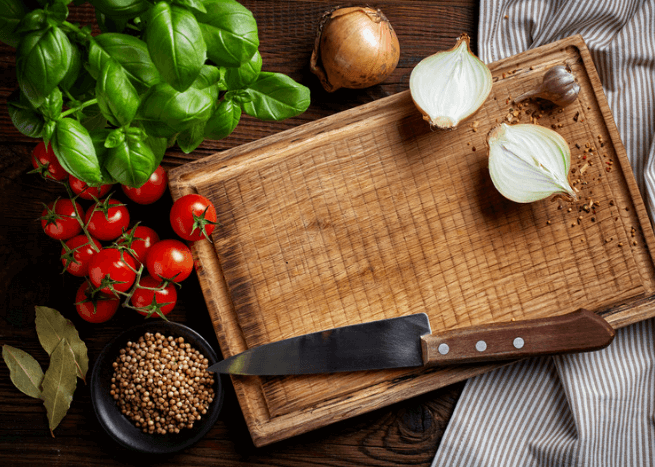Cutting Board Safety

Cutting boards are a staple in most kitchens. It is essential to be aware of cutting board safety to avoid cross-contamination and food-borne illnesses. This includes the different types of cutting boards and how to wash them properly.
Types of Cutting Boards
The two main types of cutting boards are non-porous and wood. Non-porous cutting boards are made with plastic, marble, glass, or pyro ceramic. Wood cutting boards are porous, which means they absorb juices more easily. This allows the juices from raw meats to soak into the cutting board and develop bacteria.
To avoid cross-contamination, use two cutting boards: one strictly to cut raw meat, poultry, and seafood; the other for ready-to-eat foods, like breads and vegetables. This will prevent bacteria from contaminating food that requires no further cooking. Consider using color coded cutting boards for specific food products.
Over time, cutting boards become worn out. It will be known when deep grooves appear, and it’s difficult to clean. Discard old cutting boards with cracks, crevices, and excessive knife scars.
Cleaning Cutting Boards
Not just your hands need washing before, during, and after food preparation. To prevent food poisoning, it’s also important to remember to wash your cutting boards. If not cleaned and maintained correctly, cutting boards can hold harmful bacteria.
- Non-porous and solid wood cutting boards can be washed in a dishwasher.
- If washing by hand, clean cutting boards with hot soapy water and allow them to air dry after each use.
- After cutting raw meat, poultry, or seafood on your cutting board, clean thoroughly with hot soapy water, disinfect with chlorine bleach or other sanitizing solution and rinse with clean water.
- Both wooden and non-porous cutting boards can be sanitized with a solution of 1 tablespoon of unscented, liquid chlorine bleach per gallon of water. Flood the surface with the bleach solution and allow it to stand for several minutes. Rinse with clear water and air dry or pat dry with clean paper towels.